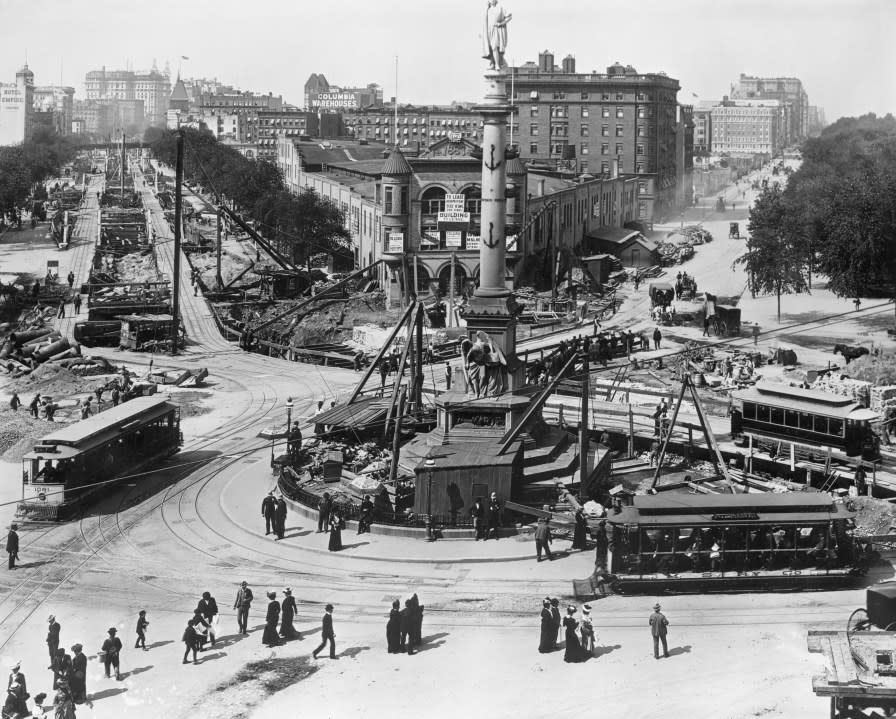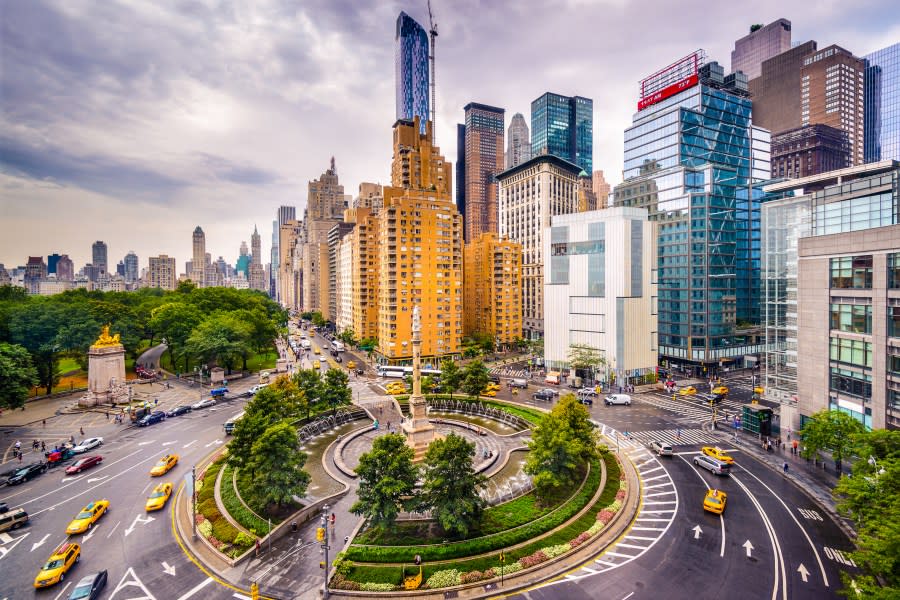Hate roundabouts? Avoid these states — they have the most

(NEXSTAR) — There are some 13,000 roundabouts in the U.S. (depending on what you consider a roundabout) — that works out to one roundabout per 25,531 people, give or take. Can you imagine 25,531 people all waiting to traverse through a roundabout?
Thankfully, you’re likely never going to encounter such a situation. But depending on where you live, you may drive through more roundabouts in a day than someone in another state does in a year.
If you aren’t familiar with what a roundabout is, let’s start there.
What is a roundabout?
Roundabouts, sometimes called traffic circles or rotaries, are circular intersections meant to “safely and efficiently” move traffic, the U.S. Department of Transportation’s Federal Highway Administration explains. Traffic enters through usually-curved approaches, yields to traffic from the left, then proceeds into the counterclockwise flow around an island.
DOT data shows roundabouts can reduce crashes that cause injury or death by roughly 80% compared to two-way stop intersections or those with stoplights.
Stuck at a red light? You may need to let it know you’re there
There are three common types: the rotary, which is typically older and larger; the roundabout, which is smaller and uses more curves; and traffic-calming circles, which are often smaller.
The Columbus Circle, a New York City traffic circle built in 1905, is said to be the first in the U.S. It’s the U.K. that gets credit for creating the first roundabout, according to the Delaware Department of Transportation.


The U.S.’s first “modern” roundabouts were built in Summerlin, a planned community outside Las Vegas, in 1990. California got its first roundabout in 1992 in Santa Barbara followed by Lisbon, Maryland in 1993. Accidents dropped dramatically at all three sites in the years after they were complete: four were reported in the first five years of the Summerlin circles; average accidents dropped from 4 to 2.1 per year at the Santa Barbara intersection; and zero accidents were reported at the Lisbon roundabout over a 21 month period (though there were two accidents in the first three months of the roundabout being open).
There’s a certain feature about the “modern” roundabouts that is likely behind their rise: the “yield-at-entry” aspect. If you’re familiar with roundabouts, you’re familiar with this rule. Those looking to enter the circulation of traffic must yield to those already in the roundabout.
What are the lights placed above traffic signals?
“This is contrary to an intersection where many drivers are encouraged by a green or yellow light to accelerate to get across the intersection quickly and to ‘beat the red light’ and contrary to old traffic circles where tangent approaches also encourage, or at least allow, high-speed entries,” a 1995 article from the DOT explains.
Where are America’s roundabouts?
Despite all their safety benefits, they aren’t as common as you may think in the U.S. As of last year, estimates put the total around 9,000.
While you may think of New York City or Los Angeles as being the most roundaboutiest metros, it’s actually Carmel, Indiana, a city of just under 102,000 people on the north side of Indianapolis. It boasts more than 138 roundabouts on its website, “more than any other city in the United States.”
Indiana, however, has only the fifth-most roundabouts, according to a database maintained by Kittelson & Associates, engineering consultants with offices around the country.
Are you wasting your time pressing crosswalk buttons?
The Roundabout Database, which relies on contributions that are manually verified, says Florida has the most roundabouts at almost 1,470. That’s nearly twice as many as California, which has 819.
Unsurprisingly, some of the most populated states have the most roundabouts. New York is an outlier, reporting just 250 roundabouts — that’s less than Oregon (257), a state that has about half the population than that of New York City.
South Dakota has the fewest reported roundabouts at 16, most of which are in Sioux Falls. Vermont and Wyoming were close behind at 20, followed by Washington, D.C. at 23.
Nebraska technically has the most roundabouts per person while Oklahoma has the fewest. And if you want to be even more specific, it’s Maryland that has the most per mile of road, The Washington Post reports.
Do you really need to let your car warm up before driving in winter?
While roundabouts seem to be a growing trend in the U.S., they do still have their drawbacks.
They can take up a decent amount of space (depending on how large the inner circle is and how many lanes are coming in) and can take a while to build. There are also some opponents who feel roundabouts can’t handle as much heavy traffic as traffic lights can, CNBC reports. Other research has shown they may not be the safest option for cyclists.
Whether you love them or hate them, it seems roundabouts and their counterparts are sticking around.
For the latest news, weather, sports, and streaming video, head to WesternSlopeNow.com.

